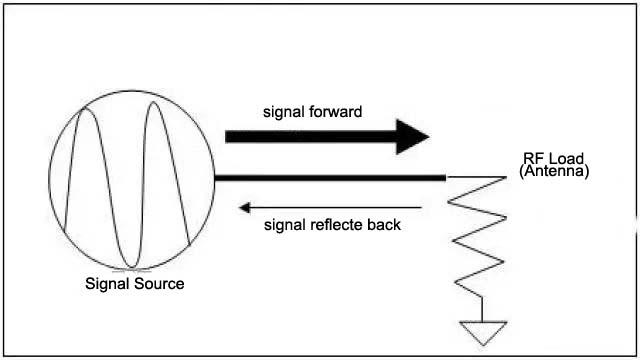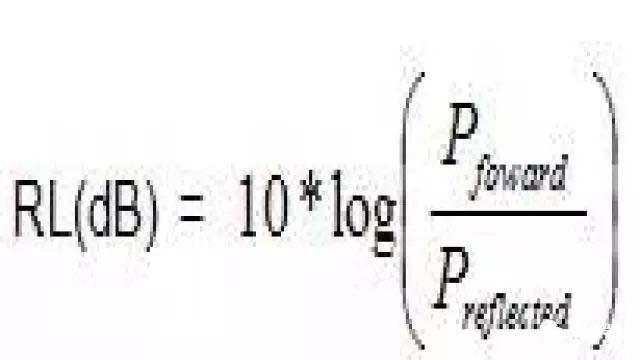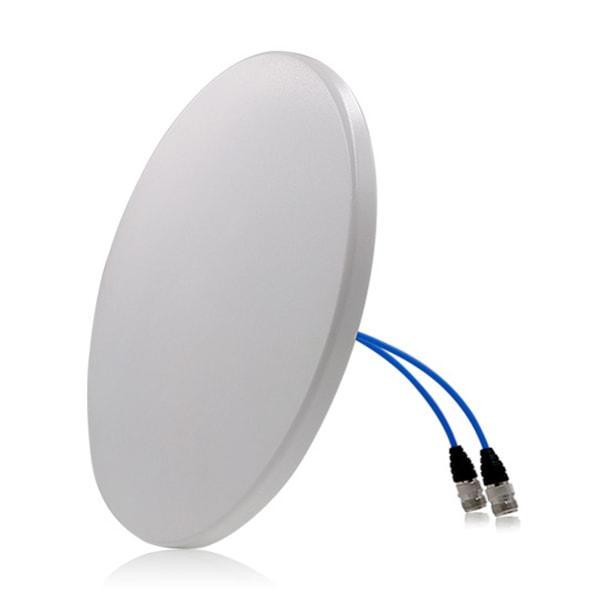What‘s VSWR for RF passive
Voltage standing wave ratio (VSWR) is used to detect the working status of antenna feeder system, RF connector and all RF equipment connected to base station. Too high VSWR will lead to call drop and high bit error rate, and the attenuation of transmit / receive power will lead to the reduction of cell coverage radius.
Only when the load impedance is completely matched with the signal source impedance can the signal be transmitted from the signal source to the load to the greatest extent. For the base station system, the signal source is the transmitter, and the load is the antenna feeder subsystem. The antenna feeder subsystem includes antenna, feeder, RF connector, lightning arrester and other auxiliary equipment. If the load and the signal source cannot match completely, part of the signal will be reflected back to the signal source, which is what we don’t want. At this time, forward wave and reverse wave will be generated, and the two signals will be combined to form a standing wave. Standing wave ratio (VSWR) refers to the ratio of the maximum level to the minimum level of the standing wave, and its size ranges from 1:1 (perfectly matched) to ∞.

We can use the reflection coefficient Γ Or the return loss RL calculates the VSWR, where we list the reflection coefficient Γ 、 Calculation formula of return loss RL and VSWR:

Among them,
Z is the output impedance
Z0 is the input impedance
Pfoward is forward power
Preflected is the reverse power

Acceptable VSWR range
Since we cannot match 100% of the load with the impedance of the signal source, some signals will inevitably be reflected back by the antenna, so we need to determine a VSWR range as the standard to measure the acceptable VSWR. Usually we take 1.13:1 – 1.38:1 as the VSWR measure. In addition, the return loss can also be used as a measurement standard. The ratio of forward power to reverse power is the return loss. If the forward power of 40dbm and the reverse power of 20dbm are known, we can calculate that the return loss is 20dB. If the output power of the base station is 20W and the return loss is 16dB, we can calculate that the reflected power is 0.5W. Generally, we take 16 – 24dB as the measurement standard of return loss.
When there is a serious fault on the transmission path from the transmitter to the antenna, it will produce very low return loss, such as loose RF connector, antenna fault, feeder damage, lightning arrester breakdown and filter / coupler damage, etc. This serious VSWR fault will lead to call drop, higher bit error rate and smaller cell coverage radius.
Voltage standing wave ratio from the perspective of power
From the viewpoint of power, the standing wave ratio can be expressed as: SWR = (√ Po + √ PR) / (√ po – √ PR)
Po: power entering the antenna system
PR: power reflected from antenna system
After calculation, the relationship between SWR and PR / PO (percentage of reflected power) is as follows: PR / PO = [(swr-1) / (SWR + 1)] ^ 2
In fact, the standing wave ratio tester is basically a power meter, which can measure the input power and reflected power
What is voltage standing wave?
The wave formed by the superposition of two columns of coherent waves with the same amplitude propagating in the opposite direction on the same straight line is called standing wave.
Features: the trough and peak remain stationary, the waveform does not propagate forward, and only vibrates at the equilibrium position; The waveform does not move in space.
Generally, the electromagnetic wave on the transmission line is composed of traveling wave (forward transmission wave) and reflected wave. The standing wave ratio reflects the state of the wave staying. For example, the larger the standing wave ratio is, the more the wave stays in place. If the standing wave ratio is infinite, it means that the wave stays in place On the contrary, the reciprocal of the standing wave ratio can be defined as the traveling wave coefficient, which represents the state of wave travel. The larger the traveling wave coefficient, the more forward the wave travel.
What is VSWR matching?
In the mobile communication system, the transmitter, antenna, feeder, RF connector, lightning arrester and other auxiliary equipment need to use cables and connectors to connect these equipment components. Only the correct connection can ensure the normal operation of the equipment. In general, people tend to pay more attention to the selection of antenna direction, elevation, polarization and frequency. The connection between equipment is often ignored in the installation and commissioning steps. The principle of “matching” should be followed from beginning to end.
“Matching”, from the perspective of power, means the maximum output power, that is, making the load impedance equal to the conjugate value of the impedance in the power supply circuit (equal resistance, equal reactance, opposite sign), which is called “matching”. The purpose of matching is to obtain the maximum output power. From the perspective of transmission line, it means lossless transmission, that is, when applied to transmission line, making the load impedance equal to the characteristic impedance of transmission line is called “matching”. The purpose of matching is to eliminate the reflection caused by the load, avoid standing wave and make the load obtain the maximum power.
In mobile communication system, many places need to be matched. The receiving antenna must have the same polarization and the same rotation direction as the transmitting antenna, so as to realize polarization matching and receive all energy. All parts of the feeder connection and the connection between components need to be matched. In the mobile communication system, as long as there is a mismatch, the signal will be reflected in the middle of the components and between the feeders, so as to reduce the signal quality and increase the noise. Therefore, for installation and commissioning users, it is necessary to do every step in a proper manner to ensure system matching.
